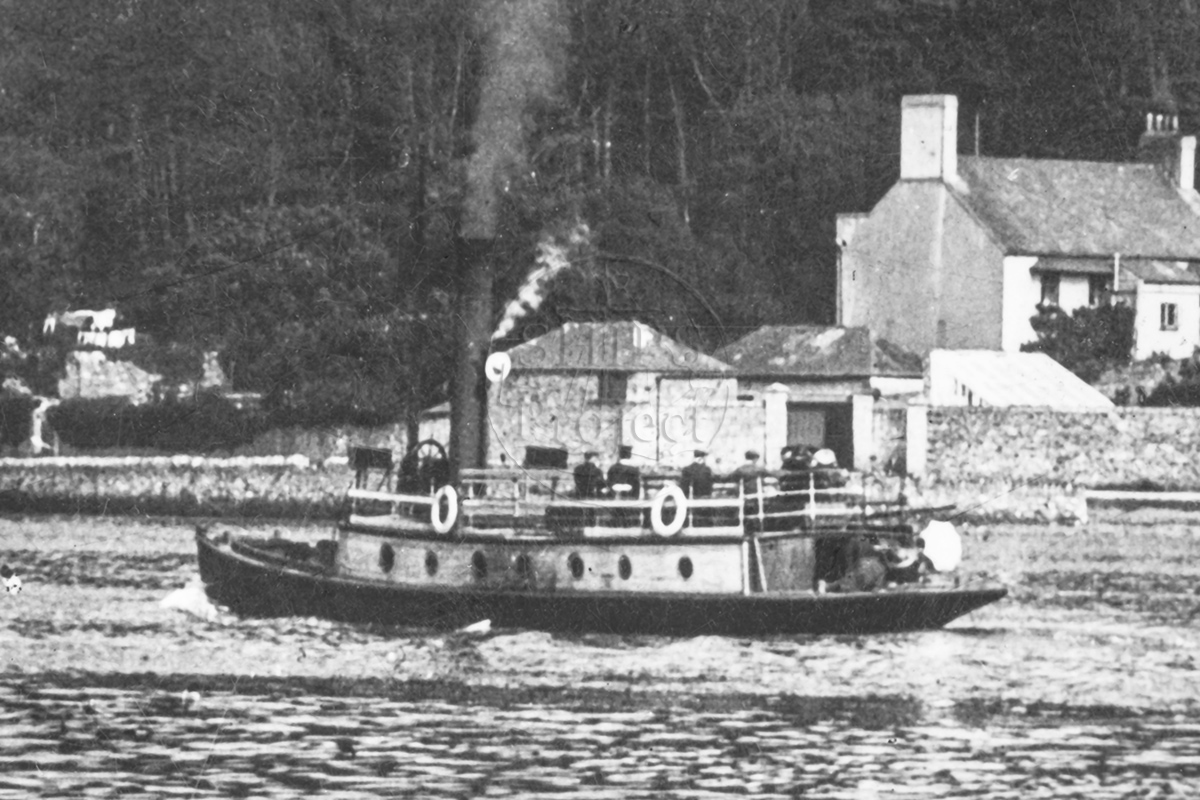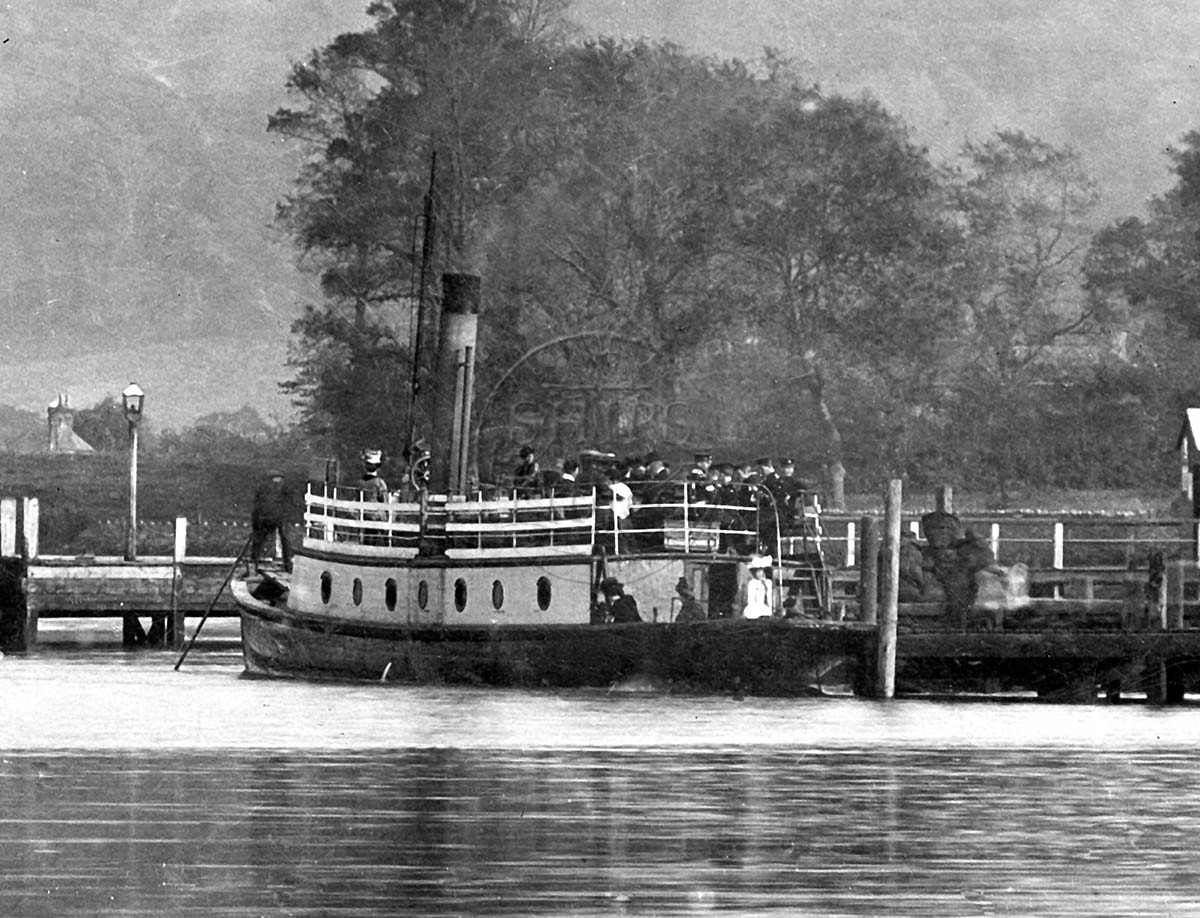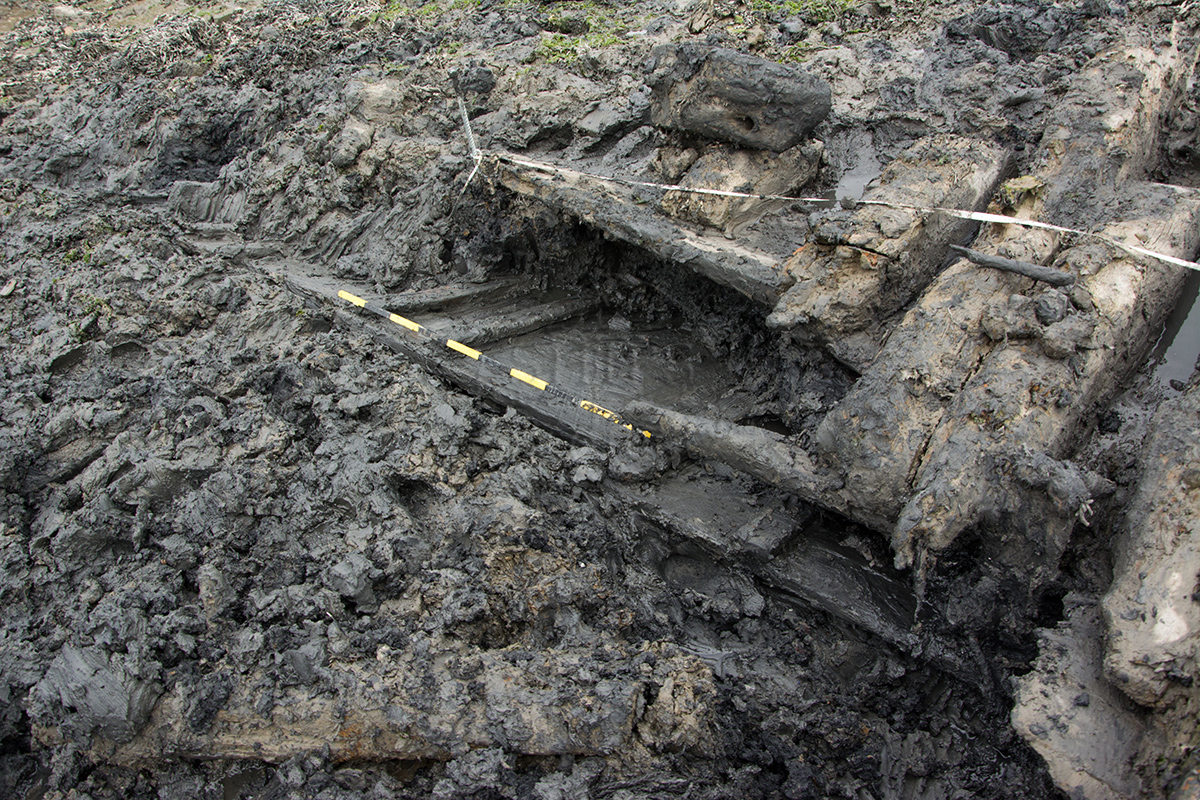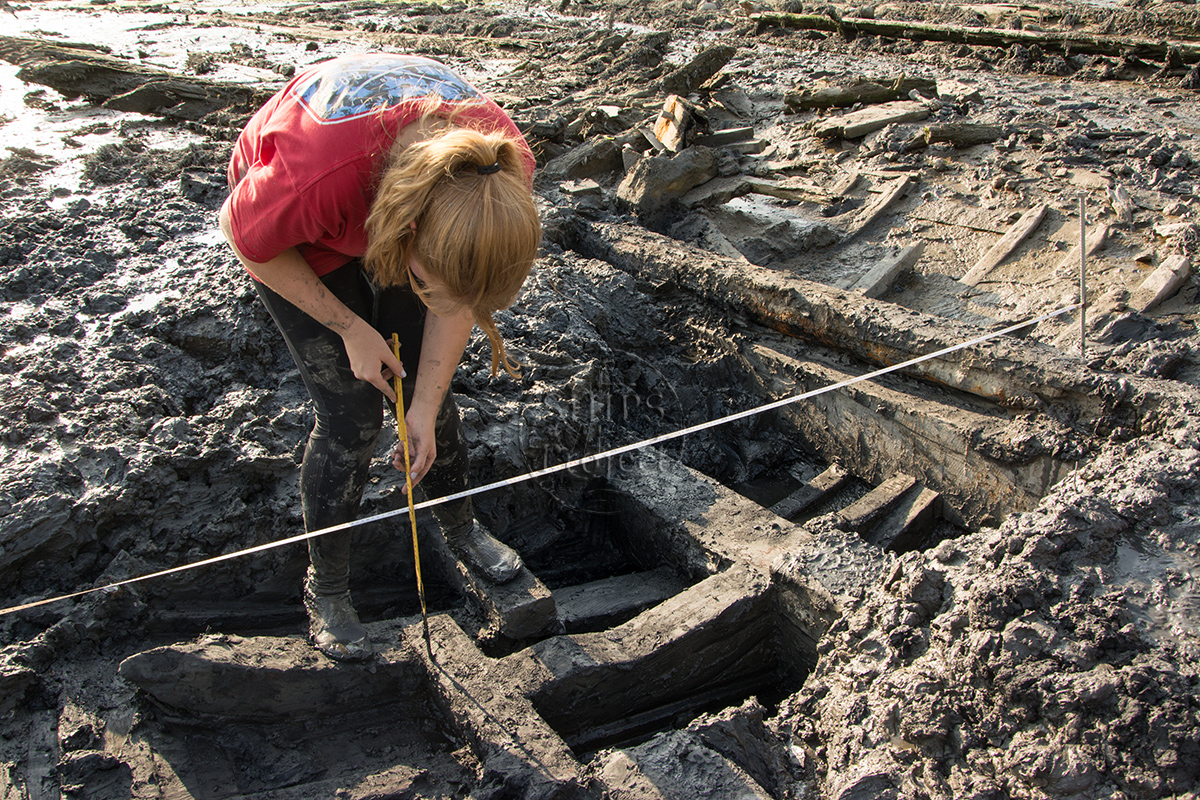Not Set
A Millbrook steam passenger ferry that was stripped and beached at the far eastern end of Hooe Lake.
Type
Passenger ferry, steam
History
In the late 1800s the easiest way to travel around the Plymouth area was by water so steam powered ferries became a popular means of transport. The dockyard at Devonport required huge amounts of manpower and some of this was provided by towns and villages on the Cornwall side of the Tamar River. John Parsons was the owner of the local tide mill at Millbrook and he started ferrying passengers from there to Devonport in 1885 using a 56ft paddle steamer appropriately called Millbrook. Parsons added more routes to his ferry schedule and bought two other vessels, Iolanthe and Lady of the Lake.
The Saltash, Three Towns and District Steamboat Company was formed in 1892 and Parsons sold his small fleet to the company in exchange for a seat on the board. After three years John Parsons parted with the Saltash Company, repossessing Lady of the Lake in settlement. Parsons then added a small screw steamer called Dispatch to his new fleet to run the Millbrook ferry service, in direct competition with his previous employers.
The screw steamship Cornubia was built by John and James Waterman for John Parsons at their yard in Cremyll in 1896/7, at what is now known as Mashford Brothers Boat Building Yard. Described as fast and good looking, Cornubia had a tall, upright, red painted funnel, a blue painted cabin and a black hull. Unfortunately, like many small vessels operating in the Plymouth area, she was unregistered and no measurements or engine details have survived. A sister ship, the screw steamer Devonia was added to the Parsons fleet in 1897.
Cornubia was used on the Millbrook ferry route, navigating the shallow waters around Millbrook, Anderton or Southdown taking workers for Devonport to Mutton Cove on the Tamar River. Cornubia was often in opposition to the Saltash Company’s shallow draft 71ft steel paddle steamer Lady Ernestine. Much competition was had between the two vessels including deliberate groundings and collisions, with accounts from the time saying that the Lady Ernestine was usually the cause.
The John Parson's Millbrook fleet in 1914 included Cornubia, her sister ship Devonia, Britannia, Hibernia and Brunel. At the outbreak of WW1 the Cornubia was requisitioned for Admiralty work in Devonport Dockyard, others were also requisitioned and by 1916 the Millbrook fleet was reduced to just the Devonia and Britannia.
After the war Cornubia was returned by the Admiralty in poor condition and was unusable. The ship was laid up at Southdown but was not stripped out. Cornubia was sold to the Oreston and Turnchapel Steamboat Company in March 1921 for £325.0.0d, they wanted her boiler as a replacement for the one in their steam ferry Rapid to be fitted alongside a new engine from Sissons & Co. It is likely that Cornubia was then stripped of fittings and her hull abandoned at the eastern end of Hooe Lake as this was common practice at the time. The Turnchapel boat Rapid had a new boiler fitted in 1939 but remained in service until 1954 when her engine and boiler were removed, she was sold in 1956 and ended her days as a houseboat on Hooe Lake, before eventually being destroyed by fire.
John Cotton identified this hulk as the remains of the Millbrook passenger ferry Cornubia but does not state his source. The hulk was mentioned in the book Lost Ships of the West Country by Langley & Small as one of three vessels side by side at the east end of Hooe Lake. Their map of Hooe Lake describes this as an 'unidentified barge', 'one of three vessels moored alongside each other and floating every high tide, they gradually fell into this decay'.
The remains of a lightly-built vessel that could be Cornubia were found by The SHIPS Project team in Autumn 2020 under the hulk Hooe Lake 4. A detailed archaeological report on this and the other hulks we investigated is currently being written.
Read about this hulk on John Cotton's Historic Shipping website ![]()
Description
The lower part of the vessel is all that can be seen, including keel, lower frames and outer planking, largely covered by the much more heavily built Hooe Lake 4.
The historian and author Alan Kittridge confirmed that there were no known records of dimensions or construction for Cornubia so we can only estimate them from similar vessels. Scaling measurements taken from photographs of Cornubia suggest that she is 66ft (20m) long. Few records exist of this type of local craft however we do have the specifications for the Cremyll ferryboats Armadillo (1929) and Shuttlecock (1928) which are of a similar length:
Length overall (LOA) 69ft (21m)
Waterline length 65ft (19.8m)
Breadth 13.5ft (4.1m)
Draft aft 4.6ft (1.4m)
Keel - Oak 8.25in x 7in (210mm x 178mm) scarphed and through bolted
Sternpost - Oak 12in x 9in (305mm x 229mm)
Rudder post - Oak 6in x 6in (152mm x 152mm)
Frames - Oak, grown, 3in sided x 6in (76mm x 152mm) moulded at centre spaced 36in (915mm) apart, double frames amidships
Grown floors - 3.5in x 6in (98mm x 152mm) at centre at every grown timber
Bilge stringers - Pitch pine 8in x 2in (202mm x 51mm), from stem to stern and through fastened
Planking - Pitch pine 1.25in (32mm) thick, through fastened and dumped
The Shuttlecock was wrecked at Mount Wise in 1910. The Armadillo was rebuilt in 1945/46 and was renamed Northern Belle, she has since been preserved by the Northern Belle Trust.
This vessel is currently being investigated and recorded by The SHIPS Project.
Location and Access
Hooe Lake, Oreston, Plymouth
From Oreston, take the Lower Saltram road off Plymstock Road then turn right into Kingfisher Way. Follow the road down to the lake and there is a car park at the end. The wreck partially covers at high tide springs so plan a visit to coincide with low water, the foreshore is accessible when the tide height is less than 2.5m above chart datum. The foreshore round the wreck is soft mud so appropriate footwear is needed.
Nearby hulks include the lighter Arthur ![]() , the fishing boat Hooe Lake 1
, the fishing boat Hooe Lake 1 ![]() , unknown vessel Hooe Lake 3
, unknown vessel Hooe Lake 3 ![]() , unknown vessel Hooe Lake 4
, unknown vessel Hooe Lake 4 ![]()
Last updated 03 Jan 2021
Information
Date Built:
1896/7
Type:
Passenger ferry
Builder:
Waterman Brothers, Cremyll
Official Number:
None
Length
20m estimated
Beam
Unknown
Depth in Hold
Unknown
Construction
Timber, carvel
Propulsion
Steam, screw
Tonnage
Unknown
Portmarks
None
Outcome
Abandoned 1921, partly broken up
Reference
Unknown
Ferry Racing
"If the captain of the Lady Ernestine had not at once ported his helm, the Cornubia would have been cut in two. Not only the captains, but some proportion of the passengers appeared to take great interest in this rivalry, bu there was the public outside to be considered, and he would earnestly impress upon the directors of both companies to warn their captains that if they indulged in this racing they would be instantly dismissed."
Plymouth County Court, Judge Edge, 13 May 1896 as reported in The Shipping Gazette and Lloyds List.
Hulked Ferryboats
Other abandoned ferryboats include:
- The Turnchapel ferry Dispatch was hulked at Southdown.
- The Turnchapel ferry Rapid
 ended her days as a houseboat in Hooe Lake before being destroyed by fire.
ended her days as a houseboat in Hooe Lake before being destroyed by fire. - The Lively
 was buried under a road at Laira.
was buried under a road at Laira. - The May Queen was abandoned at Weston Mill creek in 1943.
- The Lady Beatrice was hulked at Millbrook Lake in 1945.
- The Millbrook paddle steamer was hulked in Millbrook Lake in 1982.
- The Turnchapel ferry Swift
 was beached and broken up on Turnchapel beach in 1962.
was beached and broken up on Turnchapel beach in 1962. - The Turnchapel ferry Favourite may have ended her days as a houseboat at Lopwell.
Not Set
Leave a message
Your email address will not be published.
Click the images for a larger version
Image use policy
Our images can be used under a CC attribution non-commercial licence (unless stated otherwise).





